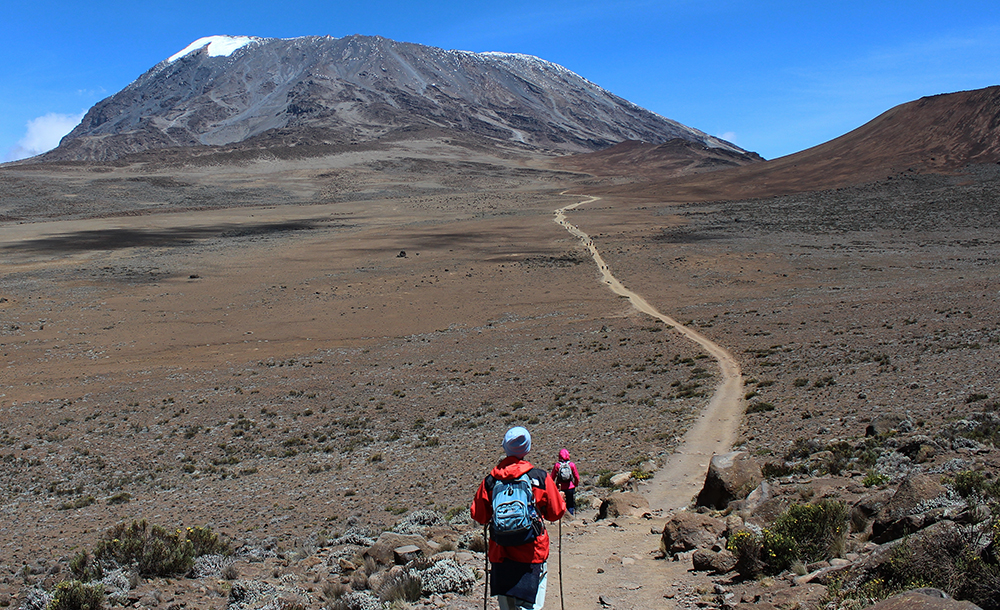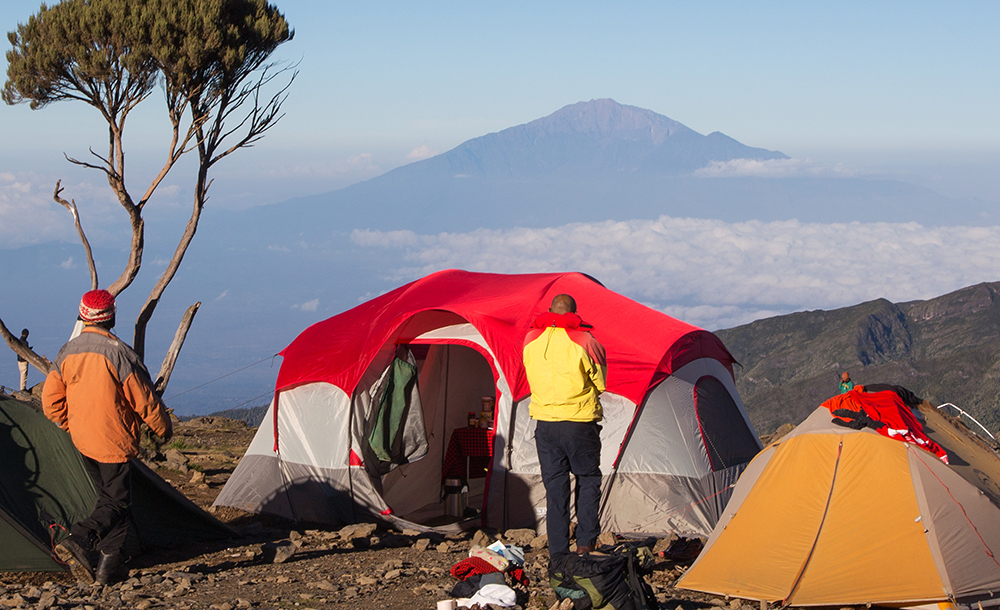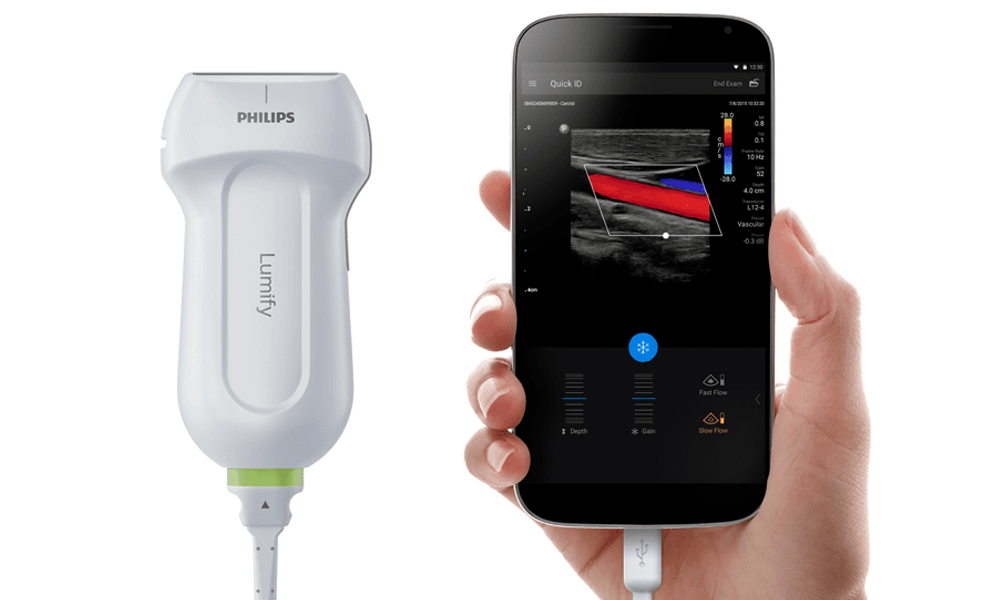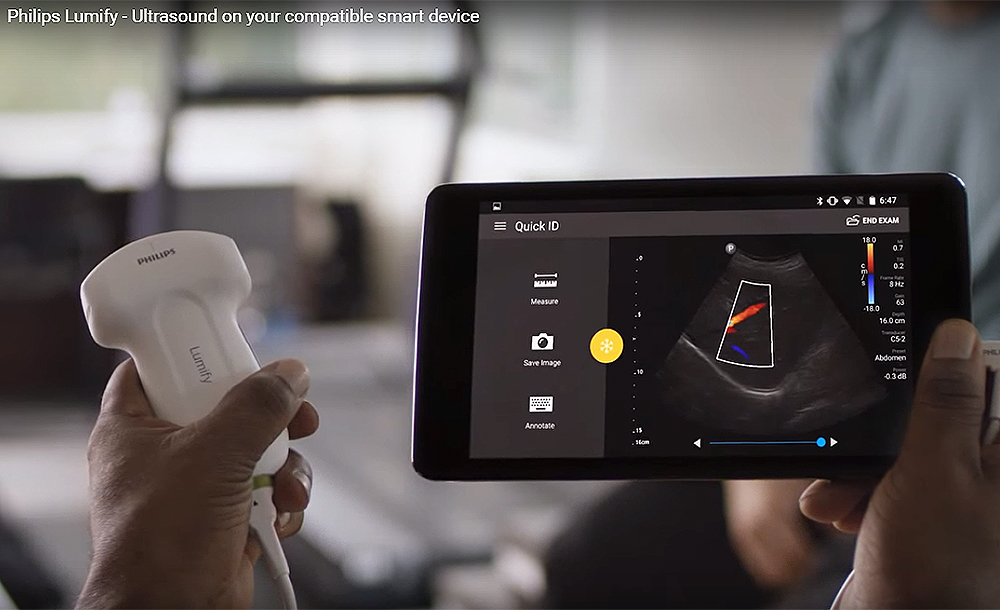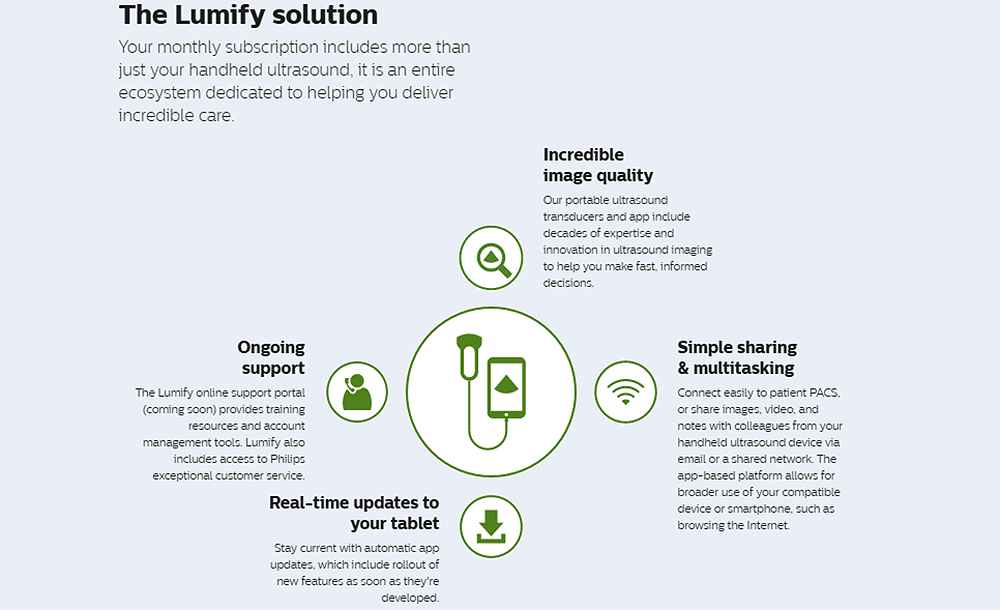Philips to use contactless monitoring for Kilimanjaro climb
Royal Philips announced it will be among the leading organisations collaborating with the Mayo Clinic to climb Mount Kilimanjaro on a research expedition to understand how the body reacts to the rigors of high altitude and how those learnings can be applied to improving human health. Because the lack of oxygen at high altitudes mimics oxygen deprivation in the body during a cardiac event, Philips researchers hope to understand how to better detect and prevent cardiac issues.
Mount Kilimanjaro is the highest peak in Africa at nearly 20,000 feet and the highest free standing mountain in the world. As a leader in digital health technologies, including devices to help save a life such as automated external defibrillators AEDs, Philips researchers hope to use the latest in app-based and digital technologies to record the vital signs of the nearly 35 participants on the climb, whose ages range from 25 to 65, to find clues as to how the body adapts to lack of oxygen.
Royal Philips is a health technology company focused on improving people’s health and enabling better outcomes across the health continuum from healthy living and prevention, to diagnosis, treatment and home care.
Among the technologies being utilised are:
Contactless monitoring
In many care settings, monitoring heart rate, arterial blood oxygenation, respiration rate and activity is a standard part of patient care to detect complications or deterioration. The current method for measuring these key vital signs requires the use of sensors on the skin or devices strapped to the body. Contactless monitoring solutions will offer clinicians a way to accurately measure vital signs for patients in a non-obtrusive way, and provide them with the data needed to know when to intervene. With every heartbeat, the cardiovascular pressure wave causes tiny micro-blushes small changes in skin color in the face. While these changes are not visible to the human eye, Philips’ contactless monitoring algorithms can calculate an accurate pulse rate by quantifying these changes.
Ultrasound systems
Philips portable CX50 xMATRIX is designed to bring premium ultrasound capability to a variety of care settings. Philips Lumify is a smart-device, app-based ultrasound designed to help make ultrasound more accessible. Lumify operates on compatible Android smart devices equipped with Internet and email functionality. The Philips CX50 xMATRIX will be used to study heart measurements while the Lumify will be used for pulmonary measurements, both of which will help provide researchers with insight on the effects of hypoxia on human physiology.
Sleep diagnostics
At high altitude, the lack of oxygen can impact the body in a number of ways, including increased work of breathing and heart rate. The Alice NightOne wireless home sleep testing system will enable the research team to gather data on sleep quality and possible sleep disturbances from reduced oxygen content in the blood at high altitudes.
“Cardiology is one of the critical areas of focus for Philips and as such, we continue to collaborate with industry leaders like the Mayo Clinic in taking a unique approach to research, which includes climbing Mount Kilimanjaro to understand how hypoxia, or lack of oxygen at high elevations, impacts people of different age groups,” said Carla Kriwet, CEO of Patient Care and Monitoring Solutions, at Philips.
“Hypoxia mimics what happens to the body in a cardiac event and can give us clues as to how to better diagnose, treat and prevent these conditions. As we uncover and better understand the body’s biomarkers and how the body’s mechanisms acclimate to high altitudes, we can continue to develop technologies that can make a meaningful impact in the diagnosis and treatment of cardiovascular care.”
Royal Philips has been active in the research of contactless medical diagnosis and monitoring. It recently announced the results of the first published study to demonstrate that absolute oxygen saturation of arterial blood SpO2, a vital sign that is commonly monitored in hospitalised and other patients, can be accurately measured across multiple patients using contactless technology. The study, published in the June issue of the journal Anesthesia and Analgesia, used Philips proprietary camera-based monitoring technology to measure the light reflected off the foreheads of 41 healthy adults to calculate SpO2.
Through the results of this study, Philips, a global leader in patient care and monitoring solutions, is the first to demonstrate that contactless SpO2 can be calibrated across patients, just like conventional contact probes, allowing accurate measurements without individual adjustments.
In many care settings, monitoring heart rate, arterial blood oxygenation, respiration rate, and activity is a standard part of patient care to detect complications or deterioration. The current method for measuring these key vital signs requires the use of sensors on the skin or devices strapped to the body; however, these contact sensors may cause damage and distress in patients with fragile skin such as newborn babies.
“Vital signs monitoring is crucial across all types of care settings, but for patient populations with specific conditions, managing their care in a less intrusive way is critical in order to avoid unnecessary distress,” added Carla from Philips Patient Care and Monitoring Solutions. “Contactless monitoring solutions will offer clinicians with a way to accurately measure vital signs for patients in a non-obtrusive way, and provide them with the data needed to know when to intervene.”
For specific patient populations, including premature infants in the NICU, a contactless alternative would provide potential advantages such as avoiding skin damage in fragile patients and freedom to select a more physiologically central location with a possible faster response rate. With every heartbeat, the cardiovascular pressure wave causes tiny micro-blushes small changes in skin color in the face. While these changes are not visible to the human eye, Philips contactless monitoring algorithms can calculate an accurate pulse rate by quantifying these changes.
Over the past 10 years, an increasing number of papers have published on the topic of contactless monitoring in the measurement of pulse or respiration rate; however, only a handful have explored SpO2 and this is the first study that has been able to convincingly demonstrate that calibrated contactless monitoring of absolute blood oxygen levels is possible. In this recent study, calibration of contactless, camera-based pulse oximetry was performed on a population of 41 healthy adults and the results are promising for the successful use of contactless monitoring for absolute blood oxygen levels in care settings without individual adjustments.
This study is the latest from Philips in its longstanding leadership in the area of contactless monitoring. In addition to the successful results of this study, Philips’ contactless monitoring solutions show promise for accurately measuring key vital signs such as heart rate and respiration rate. Philips is well-positioned to leverage its expertise and leadership in patient monitoring to tailor contactless solutions for monitoring applications across the care continuum. Collaboration with Mayo Clinic includes Philips digital measurement technologies to understand how the body deals with oxygen deprivation and potential biomarker clues.
This is not the first time that Mayo Clinic has been actively monitoring human body responses to extreme conditions. The core group of Mayo Clinic researchers that moved their lab to the base camp at Mount Everest to study heart disease and aging are at it again, this time in Africa. Along with a party of nearly 35, they will be climbing Mount Kilimanjaro, obtaining scientific data from the climbers along the way.
Led by Mayo physiologist Bruce Johnson, PhD and joined by Amine Issa, PhD, Courtney Wheatley PhD, and Jan Stepanek, MD, among others, the group will monitor climbers’ heart rates, oxygen saturation, movement, energy expenditure, skin temperature and the quality of their sleep. They will also conduct ultrasound scanning to determine differences in younger and older climbers as they react to the altitude.
“It’s about comparing heart and lung function in this natural laboratory,” says Dr Issa, who was part of the group on Everest. “We want to check on limitations to their functioning and whether or not a vitamin B3 supplement can help them.”
That supplement is being tested as part of Mayo’s collaboration with Thorne Research, a pharmaceutical company, which is a major sponsor of the climb. The researchers want to determine if an analog of vitamin B3 will increase metabolism efficiency and something called NAD, nicotinamide adenine dinucleotide, in the climbers’ blood. If so, it should help them adapt to the rigors of altitude sickness, which is in itself an analog for heart and lung disease.
Mayo will have eight in its research group. Everest mountaineer Conrad Anker of equipment sponsor The North Face, will lead the climb. In addition to Thorne Research, there will be individuals from Philips with equipment and analysis, and Biovotion, also major equipment providers, members of documentary production company Seadog, and a team from Griffith University in Australia. Also along will be Linda Wortman, cancer survivor and Mayo Clinic lung transplant patient.
https://youtu.be/FTuDPpzB-7M
Click below to share this articleSignup to the Intelligent CIO Africa newsletter and never miss out on the latest news

